The Best Guide to Unified Tracking for Split or Multi-Shipment Orders
Master unified tracking for split or multi shipment orders with our comprehensive guide. Streamline your process and improve efficiency—read more now!
Shipping, Tracking & Notifications
Boost customer experience and reduce support tickets
Realtime order and shipment tracking
Proactive order and shipping notifications
AI-Enhanced Discounted Labels
Predictive pre-purchase estimated delivery dates
Self-Serivce branded order tracking
Effortless experience delivered
Identify and Resolve Order Issues
Realtime order and shipment tracking
Make returns profitable and delight customers
Flexibility to define any return destinations & conditions
Simplify returns for your customers and team
Incentivize exchanges over returns
Returns management made easy for your team
Returns management made easy for your team
Easy claims and smart upsells
Understand why your customers are returning
In-Store & Curbside Pickup
Unify the online and the in-store experience
Hassle-free pickup experience for customers
In-Store dashboard to keep operations streamlined
In-Store and Online orders unified
Drive foot-traffic to your stores
Shipping, Tracking & Notifications
Boost customer experience and reduce support tickets
Realtime order and shipment tracking
Proactive order and shipping notifications
AI-Enhanced Discounted Labels
Predictive pre-purchase estimated delivery dates
Self-Serivce branded order tracking
Effortless experience delivered
Identify and Resolve Order Issues
Realtime order and shipment tracking
Make returns profitable and delight customers
Flexibility to define any return destinations & conditions
Simplify returns for your customers and team
Incentivize exchanges over returns
Returns management made easy for your team
Returns management made easy for your team
Understand why your customers are returning
In-Store & Curbside Pickup
Unify the online and the in-store experience
Hassle-free pickup experience for customers
In-Store Dashboard to keep operations streamlined
In-Store and Online orders unified
Drive foot-traffic to your stores
Boost customer experience and reduce support tickets
Realtime order and shipment tracking
Proactive order and shipping notifications
AI-Enhanced Discounted Labels
Predictive pre-purchase estimated delivery dates
Self-Serivce branded order tracking
Effortless experience delivered
Make returns profitable and delight customers
Flexibility to define any return destinations & conditions
Simplify returns for your customers and team
Incentivize exchanges over returns
Returns management made easy for your team
Equip your team for precise return checks.
Easy claims and smart upsells
Understand why your customers are returning
Unify the online and the in-store experience
Hassle-free pickup experience for customers
In-Store Dashboard to keep operations streamlined
In-Store and Online orders unified
Drive foot-traffic to your stores
Find the answer to all your questions
Take a step by step trip through our functionality to see how we can improve your ecommerce processes.
Explore the most comon questions about WeSupply
Calculate the ROI that WeSupply can bring you
Read actionable articles on how to optimize your post-purchase experience and decrease support tickets
Get inspired by stories of how our customers implemented an effortless post-purchase experience
Wondering if WeSupply is a good fit for you? Read through our use cases to see how we can help you increase conversion & improve CX!
A Deep Dive into Top Companies' Order Tracking & Returns Strategy
Find the answer to all your questions
Explore the most comon questions about WeSupply
Calculate the ROI that WeSupply can bring you
Request a no strings attached review of your current shopping experience and missed conversion opportunities
Take a step by step trip through our functionality to see how we can improve your ecommerce processes.
Read actionable articles on how to optimize your post-purchase experience and decrease support tickets
Get inspired by stories of how our customers implemented an effortless post-purchase experience
A Deep Dive into Top Companies' Order Tracking & Returns Strategy
Wondering if WeSupply is a good fit for you? Read through our use cases to see how we can help you increase conversion & improve CX!
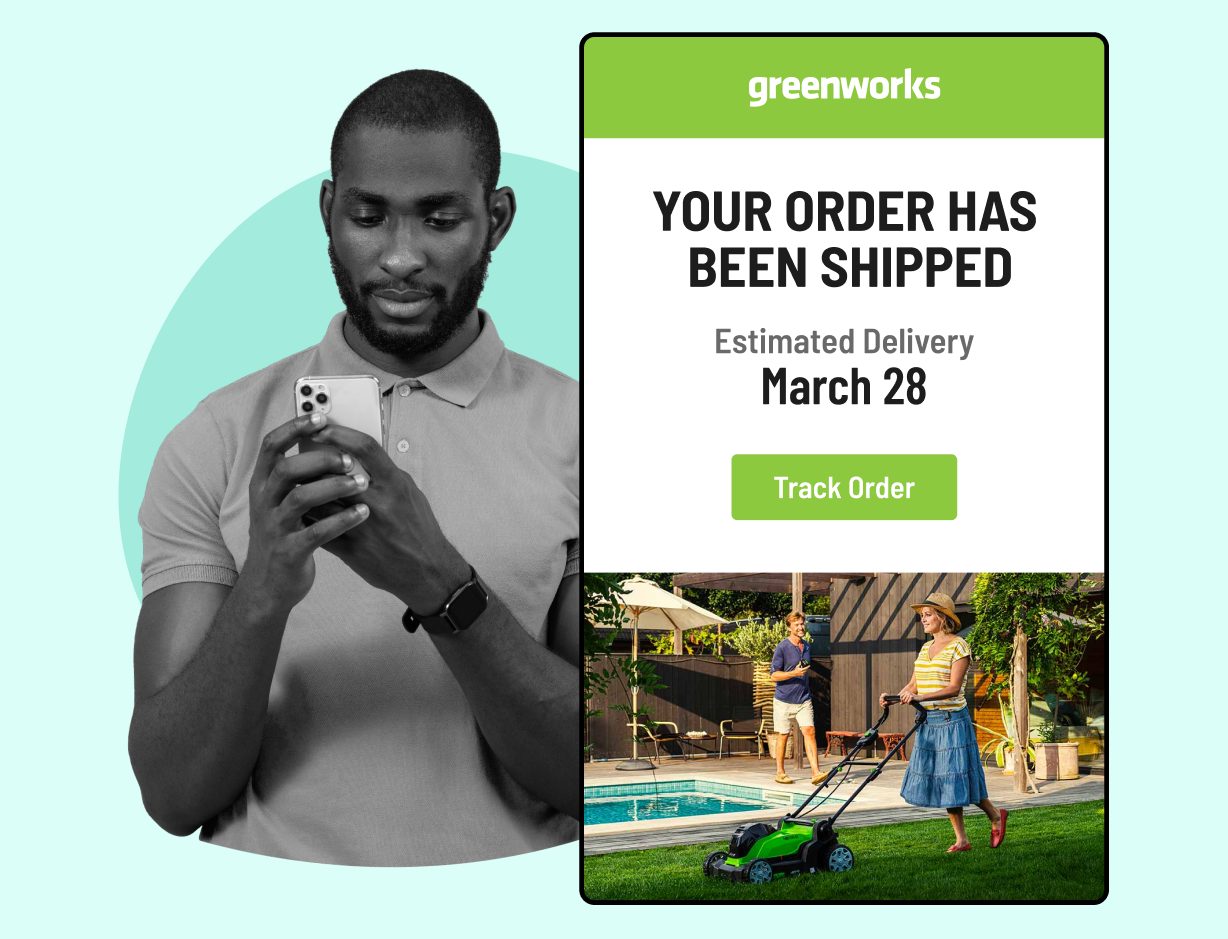
In today’s fast-paced ecommerce environment, customers expect more than just a product—they expect an experience. A huge part of that experience is knowing when their order will arrive. Estimated delivery dates (EDDs) aren’t just logistical details; they’re promises. When a brand communicates a delivery timeline, customers expect that promise to be kept. Break it, and trust is compromised. Keep it, and you lay the groundwork for long-term loyalty. Providing enhanced estimated delivery dates on your ecommerce website can improve customer satisfaction by showing customers that you value their time and needs, which in turn fosters brand loyalty.
Shoppers increasingly rely on accurate EDDs to make purchase decisions. Whether they’re buying a birthday gift or planning for a holiday, knowing when an item will arrive can be a deal-breaker. This makes EDDs a critical trust-building element in the customer journey. Clear, accurate, and transparent EDDs help create satisfied customers by setting realistic expectations and ensuring a positive experience. Clear, accurate, and transparent EDDs reduce anxiety, lower cart abandonment, and help drive conversions. In a competitive market, getting this right can set your brand apart.
Today’s ecommerce customers are more discerning than ever, and their expectations around delivery are a critical part of the online shopping experience. They want to know not just that their order will arrive, but exactly when and how. Providing estimated delivery dates, clear delivery estimates, and transparent information about shipping speeds and shipping methods is essential for building trust and confidence.
Ecommerce brands that prioritize understanding and meeting these delivery expectations set themselves apart from the competition. By implementing robust systems that factor in shipping rules, real-time order status, and accurate delivery timelines, businesses can provide customers with the information they need to make informed purchasing decisions. This level of transparency not only improves customer satisfaction but also enhances the overall customer experience.
When customers receive reliable delivery information, they feel valued and respected, which leads to increased loyalty and repeat business. In a crowded marketplace, offering accurate delivery estimates and clear communication about delivery dates can provide a significant competitive advantage and help boost sales. Ultimately, understanding and addressing customer needs in delivery expectations is a foundational step for any ecommerce brand looking to build lasting relationships and drive growth.
Providing accurate and transparent delivery information does more than improve the customer experience—it impacts your bottom line. Customers are more likely to complete purchases when they can see exactly when their order will arrive. In fact, studies show that clearly displayed EDDs can increase conversions by up to 7%. Clearly displaying shipping costs alongside delivery estimates can further reduce cart abandonment and improve conversion rates.
Beyond conversions, accurate EDDs reduce the burden on customer service teams. One of the most common post-purchase inquiries is “Where is my order?” (WISMO). Accurate EDDs help manage customer expectations and reduce the impact of shipping delays on customer service inquiries, as customers are better prepared for potential delays and can plan accordingly.
Moreover, meeting delivery promises helps build long-term trust, which directly contributes to customer loyalty and retention. Brands that consistently deliver on time see higher Net Promoter Scores (NPS), greater customer lifetime value (CLV), and more repeat purchases.
Calculating EDDs isn’t as simple as estimating transit time. It requires a comprehensive look at several key factors to ensure accuracy. Start with your inventory: knowing what’s in stock, where it is, and how fast it can be packed and shipped is fundamental. Real-time inventory visibility is essential and can be achieved through RFID tagging and centralized systems. The order date and fulfillment process are the starting points for calculating estimated shipping time, expected time, and delivery time, as they determine when an order enters the system and how quickly it can be processed for shipment.
Next, consider the shipping method and speed. Standard shipping will have a longer window than expedited or same-day options, and each should reflect different EDDs based on the actual performance of carriers. The chosen shipping method and shipping option directly impact shipping speed, and both the estimated shipping date and estimated shipment date are determined by these selections, helping to set clear expectations for customers.
Customer location is another major factor. Deliveries to rural areas may take longer than those to major cities. Your system should calculate EDDs based on proximity to the nearest fulfillment center, considering warehouse cut-off times to avoid promising same-day dispatch when it’s not feasible. Transit times and the distance to the final destination both influence the estimated delivery time, as orders traveling farther or through more complex routes may require longer expected times.
External variables like weather events, holidays, and regional disruptions also play a role. Integrating real-time carrier data and historical shipping trends helps brands account for these fluctuations and build a buffer into delivery estimates. A robust shipping strategy helps account for unforeseen delays and ensures accurate delivery time predictions by optimizing the fulfillment process and coordinating ship dates with carriers.
To manage these moving parts, ecommerce brands need robust technology. An Order Management System (OMS) serves as the backbone, integrating inventory data, shipping rules, carrier performance, and order processing timelines. Integrating these systems significantly improves operational efficiency for any ecommerce business by streamlining logistics and ensuring smoother order fulfillment. The right OMS enables real-time adjustments and ensures customers receive accurate, updated delivery estimates at every stage of the shopping journey.
Artificial Intelligence (AI) and predictive analytics take this a step further. These tools analyze historical data and current conditions—like order volume, weather, or traffic patterns—to dynamically adjust EDDs. If a snowstorm is headed toward a major distribution hub, the system can proactively extend EDDs and alert customers.
Multi-origin support is another critical feature. If you fulfill orders from multiple warehouses or stores, your system should automatically select the most efficient shipping location based on inventory and customer location. This not only shortens delivery times but improves EDD accuracy.
Precision in delivery promises is a powerful way to build customer confidence. When ecommerce brands provide specific, accurate delivery dates—rather than vague timeframes—customers can plan around their orders with certainty. This level of detail transforms the delivery estimate from a rough guideline into a reliable commitment, reducing anxiety and enhancing the overall customer experience.
Leveraging advanced logistics and shipping systems allows businesses to generate accurate delivery estimates based on real-time data. By factoring in variables such as inventory levels, shipping options, and customer location, brands can offer delivery dates that reflect actual capabilities. Real-time updates further reassure customers, keeping them informed every step of the way.
Offering options like same day delivery or expedited shipping not only meets the needs of customers who value speed but also demonstrates a brand’s commitment to service excellence. By consistently setting and meeting specific delivery dates, ecommerce brands show that they value their customers’ time, which leads to higher customer satisfaction and fosters long-term loyalty.
Once you’ve accurately calculated EDDs, displaying them effectively is key. Start by showing delivery date estimates and accurate delivery dates early in the buying process—ideally on the product page. Displaying delivery date estimates and accurate delivery dates on product pages builds trust and helps customers make informed decisions. Reiterate the EDD in the cart and again during checkout to reinforce transparency.
Be specific with dates. Customers prefer clear estimates like “Arrives by Tuesday, July 8th” over vague ranges like “2–3 business days.” Providing a specific date as the estimated date sets clearer expectations and demonstrates confidence in your logistics.
Consider implementing a delivery estimator or calculator that allows customers to input their zip code and get a personalized delivery date. Using zip codes and the customer’s location enables you to provide estimated delivery dates tailored to each shopper. This tool enhances trust and adds a layer of interactivity to the shopping experience.
Branded tracking pages also help build trust. Instead of redirecting customers to a carrier’s generic site, provide a branded experience with real-time updates, expected delivery timelines, a visual progress tracker, and the tracking number for easy access to shipment status. This reinforces your brand identity and keeps the customer journey seamless.
Displaying delivery date estimates and estimated dates on checkout pages is crucial for transparency. Including these details on checkout pages helps customers plan, reduces uncertainty, and increases confidence in your ecommerce website.
Even the most accurate EDDs can occasionally go off track. The key is to maintain transparency. Proactive communication is essential. If there’s a delay, notify the customer as soon as possible. Let them know what caused it and when they can expect their item to arrive. Unforeseen delays, such as customs holds or carrier issues, can happen due to factors outside your control—communicating these helps customers adjust their plans accordingly. Honesty in these moments builds more trust than silence.
Provide real-time tracking through multiple channels. Let customers choose how they want to receive updates—via email, SMS, or push notifications. This gives them control and reduces the frustration of uncertainty. When exact delivery dates are unknown, offering an educated guess based on available information helps customers make a customer plan for receiving their order.
Use clear, consistent messaging like “Order by 2 PM for delivery by Friday” to manage expectations and create urgency. Especially during peak seasons or for time-sensitive gifts, this clarity can be the deciding factor in a purchase.
While urgency can drive conversions, it must be grounded in accuracy. Countdown timers and limited-time offers are effective, but only if they’re backed by reliable delivery performance. Nothing erodes trust faster than a missed guaranteed delivery date.
To use urgency effectively, tie it to operational realities. For instance, “Order within the next 3 hours for same-day dispatch” only works if your warehouse can actually fulfill that promise. When implemented with care, urgency and accurate EDDs work hand-in-hand to improve conversion rates and reduce cart abandonment.
Behind every EDD is a chain of operational processes that must run smoothly. Start with your warehouse. Efficient picking, packing, and staging procedures reduce processing time and ensure orders move quickly from cart to carrier. Streamlined shipping processes are essential to make sure each package leaves the warehouse on time, directly impacting delivery timelines.
Automation technologies such as robotics and conveyor systems can streamline these tasks, minimize human error, and increase speed. Well-planned labor management is equally important, especially during sales events or holidays.
Inventory accuracy is crucial. Conduct regular audits across suppliers, warehouses, and stores. Use standardized reporting formats to ensure data consistency, and invest in demand forecasting tools to keep high-demand items well-stocked.
Partner with reliable carriers and monitor their on-time performance regularly. Strong relationships can also help you negotiate better terms or access faster shipping methods when needed. Additionally, tracking the shipping date for each order is vital to monitor and improve delivery accuracy.
EDD accuracy shouldn’t stop at checkout. Ongoing delivery date management ensures customers are kept informed post-purchase. Use your OMS and logistics tools to monitor actual vs. promised delivery timelines and update customers accordingly. Be sure to record the actual date of delivery for accurate performance tracking.
Analyze trends in missed or delayed deliveries and adjust your estimates proactively. Treat EDD accuracy as a key performance metric for both your logistics team and customer experience department.
Solicit feedback post-delivery. Ask customers how the shipping experience went and whether the delivery matched the promised date. These insights can drive continuous improvement. Clearly communicating the return window and the specific return date to customers is also essential for a transparent and positive post-purchase experience.
Reliable delivery promises are a key driver of higher conversion rates in ecommerce. When customers see clear, accurate delivery estimates—complete with specific dates and shipping options—they’re more likely to complete their purchase with confidence. Transparent delivery information removes uncertainty from the buying process, making it easier for customers to make quick, informed purchasing decisions.
Ecommerce brands can further increase conversion rates by providing real-time updates on order status and delivery timelines, ensuring customers always know where their order stands. Flexible shipping options, such as same day delivery or in-store pickup, cater to a variety of customer needs and preferences, enhancing the overall customer experience.
By consistently delivering on their promises and providing clear delivery expectations, brands build trust that leads to repeat purchases and positive word-of-mouth. Reliable delivery is more than just a logistical detail—it’s a powerful tool for boosting conversion rates, strengthening customer relationships, and driving long-term business growth.
International shipping introduces added complexity. Customs processing, import duties, and carrier hand-offs can all introduce delays. Still, customers expect accurate delivery information regardless of location.
To improve international EDDs, factor in customs clearance timelines and region-specific delivery windows. Provide transparency about potential duties and taxes, and offer tracking that extends beyond domestic borders.
Use international shipping rules in your OMS to calculate EDDs based on country, method, and carrier reliability. Clear communication is especially important for cross-border orders, where delays can be harder to predict.
Not all customers have the same delivery needs. Offering a range of shipping options—from free standard to paid expedited—allows shoppers to choose what works best for them. Display all options clearly, with corresponding EDDs, so customers understand the value of each.
This transparency empowers shoppers and shows that you respect their time and preferences. It also opens up opportunities for upsells, as some customers may be willing to pay more for faster delivery if the EDD is guaranteed.
Flexibility is a competitive advantage. It builds trust and positions your brand as customer-first.
EDD strategy isn’t a one-and-done initiative. It requires continuous refinement. Monitor your EDD accuracy regularly and compare it against actual performance. When issues arise, trace them back to their source—whether it’s warehouse delays, carrier issues, or system errors.
Test different ways of displaying EDDs. A/B test formats like date ranges vs. specific dates, or visual timelines vs. plain text. Use the results to optimize for engagement and clarity.
Stay updated on new logistics technologies and tools that can improve EDD accuracy. Consider machine learning models that adapt in real-time or enhanced integrations with last-mile carriers.
For ecommerce brands serious about building customer trust, accurate estimated delivery dates (EDDs) aren’t just a perk—they’re a promise. To help you deliver on that promise with confidence, WeSupply has partnered with EasyPost’s AI-powered Luma platform, creating a powerhouse integration that takes delivery prediction and customer satisfaction to the next level.
Launched in June 2025, this integration enables retailers to show highly accurate, real-time delivery dates across the shopping journey. By combining WeSupply’s intuitive post-purchase platform with Luma’s AI-driven insights, brands can offer a more transparent, reliable, and engaging delivery experience—before and after checkout.
EasyPost’s Luma uses billions of historical shipment data points to calculate precise delivery windows, accounting for:
Carrier performance variability
Shipping method and route complexity
Weather delays, holidays, and regional disruptions
International customs clearance and duties
Weekend and non-standard delivery operations
Using predictive analytics, Luma intelligently calculates realistic “deliver-by” dates and updates them in real time as conditions change. If a delay is likely, it adjusts the EDD automatically—giving your team and your customers time to prepare.
Set accurate expectations before checkout by displaying estimated delivery dates on the product page, cart, and checkout. Customers appreciate clarity, and retailers enjoy higher conversion rates.
Predicts delivery dates using logistics data
Builds trust from the first click to the last mile
Boosts conversions by up to 24%
Reduces cart abandonment by up to 36%
Keep your customers in the loop, every step of the way. From branded tracking pages to automated shipment notifications, WeSupply keeps delivery promises front and center.
Display delivery estimates in post-purchase emails and SMS
Reinforce trust with proactive updates
Enhance brand consistency across all touchpoints
Not all products ship the same—and WeSupply gets that. Use flexible rules to show tailored delivery dates based on SKU, category, inventory location, or fulfillment method.
Account for processing time (e.g. custom furniture vs. in-stock t-shirts)
Adjust for warehouse locations and cut-off times
Exclude holidays and weekends from delivery estimates
Prevent unrealistic promises and missed expectations
Don’t lose sales to out-of-stock messages. Turn backorders into an opportunity by showing when products will ship—before purchase—and keeping customers engaged post-purchase.
Set clear expectations for pre-orders and backordered items
Send proactive updates via email and SMS
Increase revenue by enabling purchases even during stockouts
Encourage quick decisions with countdown timers and dynamic shipping promises like “Order in the next 2 hours to receive it by Friday!”
Add urgency with configurable cut-off times
Build trust with accurate fulfillment windows
Boost same-day or expedited order volume
Whether it’s displaying accurate EDDs before checkout or proactively managing delays after purchase, WeSupply + Luma ensures your brand delivers on its promises every time—leading to happier customers, fewer support tickets, and stronger brand loyalty.
Ready to turn delivery dates into a competitive advantage? Book a demo today!
Predictive pre-purchase estimated delivery dates
Book a quick call with our experts to see how WeSupply can help you set the appropriate expectations from the start and boost your conversion along the way.
Estimated delivery dates are no longer just a logistics detail—they’re a key driver of trust, satisfaction, and repeat business. When customers know exactly when to expect their order and it arrives as promised, it reinforces your brand’s reliability and builds long-term loyalty.
With WeSupply’s advanced EDD capabilities, powered by its integration with EasyPost’s Luma, you can offer hyper-accurate delivery estimates from product page to post-purchase. Luma’s AI-driven data combined with WeSupply’s predictive engine ensures estimates are tailored based on SKU, warehouse location, processing time, and even carrier performance. Customers stay informed through branded tracking pages, proactive SMS/email updates, and clear delivery promises—even for backordered items.
Whether you’re managing split shipments, high order volumes, or complex fulfillment scenarios, WeSupply gives you the tools to communicate transparently, reduce friction, and exceed expectations. In a competitive ecommerce landscape, the brands that win are those that consistently deliver—not just the product, but the experience.
Combat inconvenience with proactivity & self service
Book a quick call with our experts to see how WeSupply can help you make returns easy for your customers with a beautiful, self-service solution that makes their experience easier while also providing new ways to lower costs and earn back revenue.
1. How do accurate estimated delivery dates build customer trust?
They reduce uncertainty, improve satisfaction, and set clear expectations. When delivery promises are met, customers feel confident in your brand and are more likely to buy again.
2. Why should ecommerce stores display delivery dates before checkout?
Showing delivery dates on product pages and in carts increases transparency, helps shoppers plan, and boosts conversions by up to 7%.
3. What factors influence accurate estimated delivery dates?
Key factors include inventory availability, shipping method, customer location, carrier performance, and external delays like weather or holidays.
4. How does WeSupply improve estimated delivery accuracy?
WeSupply integrates with EasyPost’s AI-powered Luma to calculate real-time, SKU-specific delivery dates based on inventory, location, and shipping rules.
5. What makes WeSupply’s tracking experience different?
WeSupply offers branded tracking pages with proactive SMS/email updates and visual timelines, keeping customers informed and engaged after checkout.
6. Can WeSupply handle preorders and backorders effectively?
Yes. WeSupply shows accurate shipping dates for backordered items and sends updates to manage expectations and reduce order cancellations.
7. Does WeSupply have an Official Shopify App?
Yes. WeSupply has an Official Shopify App. You can download it and start integrating with your Shopify Store.
8. Does WeSupply have an official Magento extension?
Yes, WeSupply has an official extension for Magento. The WeSupply x Magento integration allows for automating order tracking experiences, reducing customer inquiries, automating shipping email and SMS notifications, and providing a fully branded order tracking experience
9. Does WeSupply have an official BigCommerce App?
Yes, WeSupply has an official BigCommerce App. You can integrate WeSupply with your BigCommerce store to improve your post-purchase customer experience.
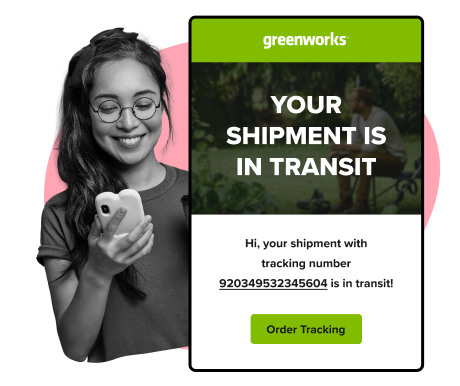
Learn How To Create Successful Post Purchase Email Campaigns
Build an effective post-purchase email flow that helps you increase customer satisfaction and drive revenue growth!
Master unified tracking for split or multi shipment orders with our comprehensive guide. Streamline your process and improve efficiency—read more now!
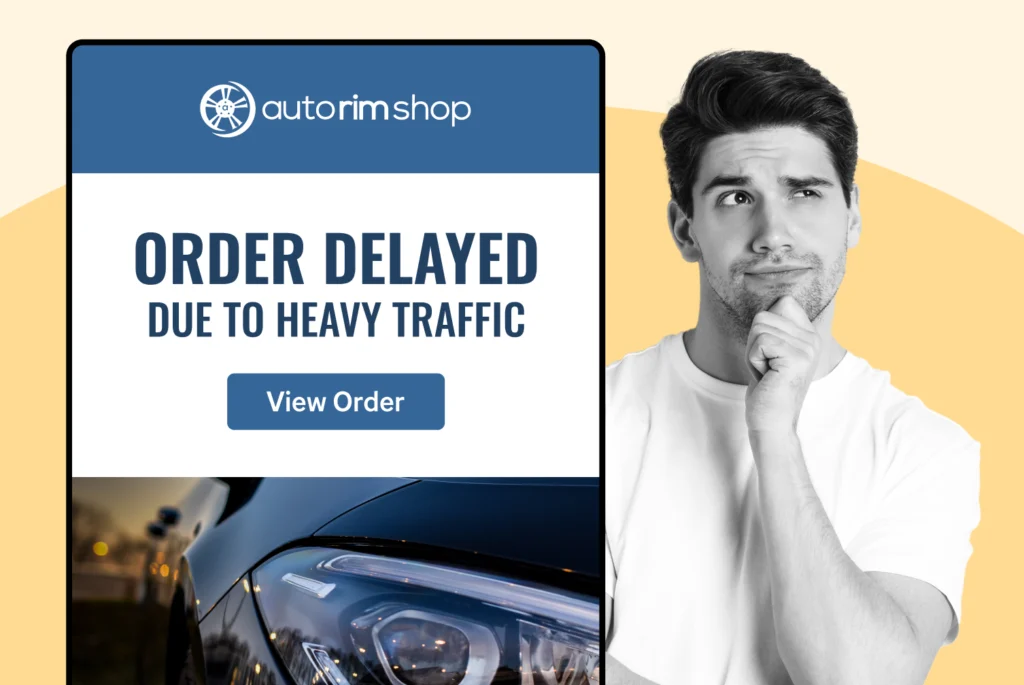
Learn effective strategies for handling shipment exceptions and improving customer communication. Read the article for practical tips and insights.
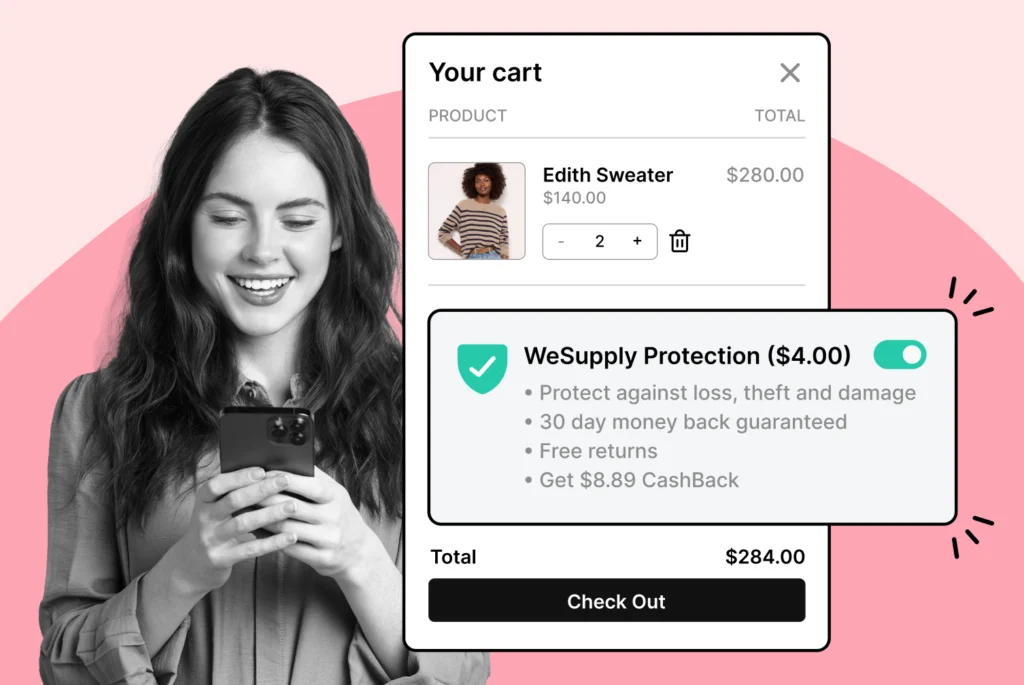
Discover how effective shipping insurance integration can enhance your business efficiency and protect your assets. Read the article for practical insights.
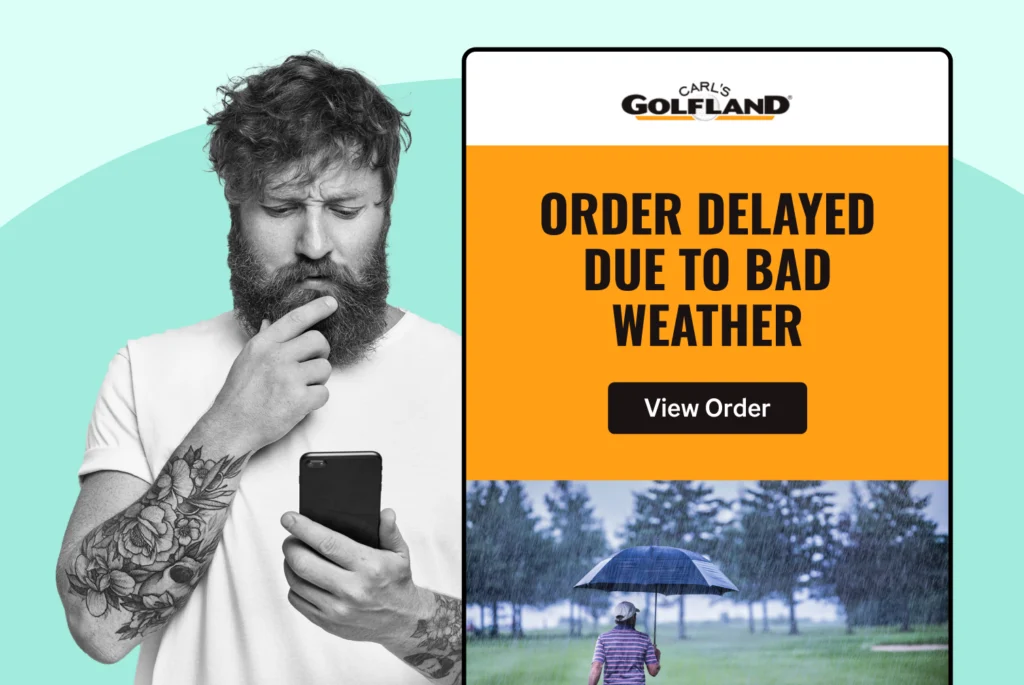
Discover effective strategies to manage your shipments with ease. Streamline your process and enhance your shipping efficiency!
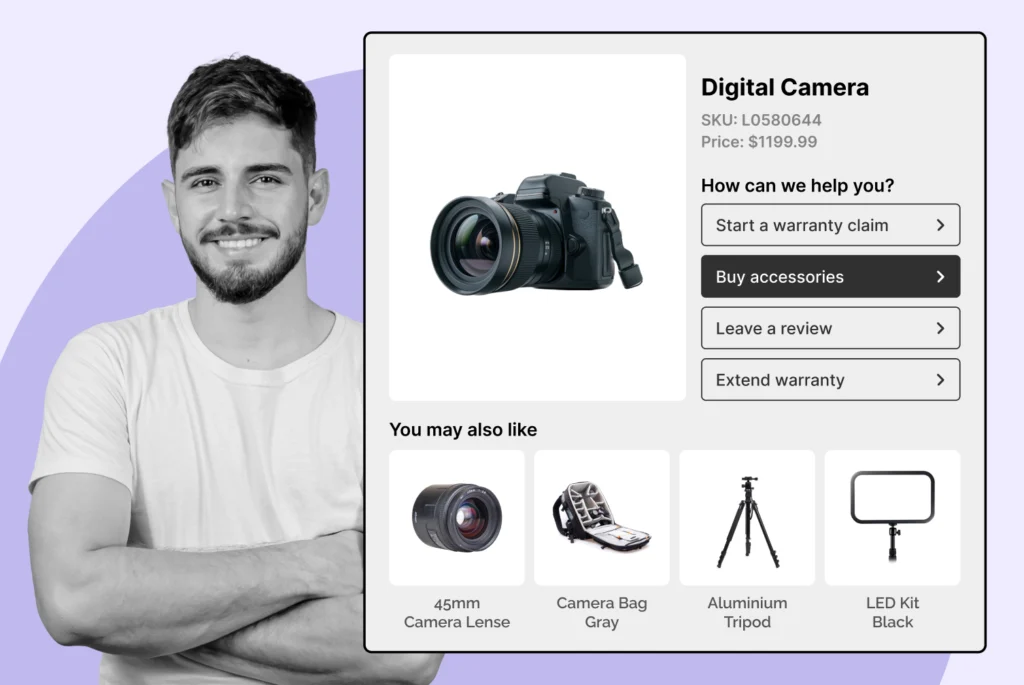
Discover how effective warranty returns management can enhance customer loyalty and strengthen your brand. Read on to transform your return process!
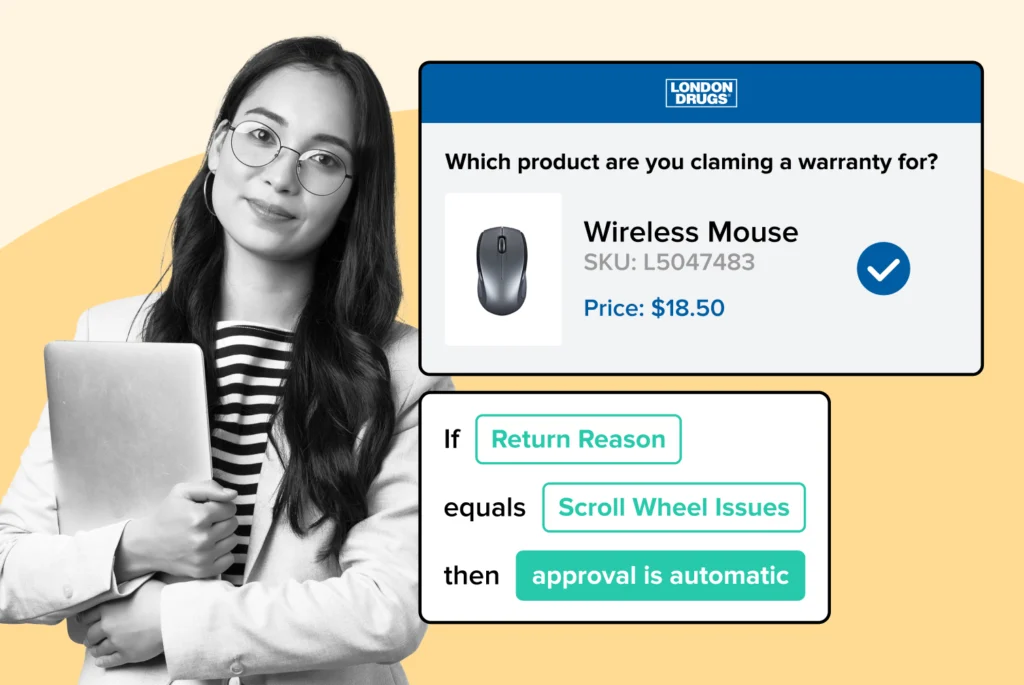
Learn how to streamline warranty returns at scale with practical strategies for efficiency and effectiveness. Read the article for actionable insights.

Create an effective warranty return flow for fragile goods to minimize losses and enhance customer satisfaction. Discover practical steps in our article.
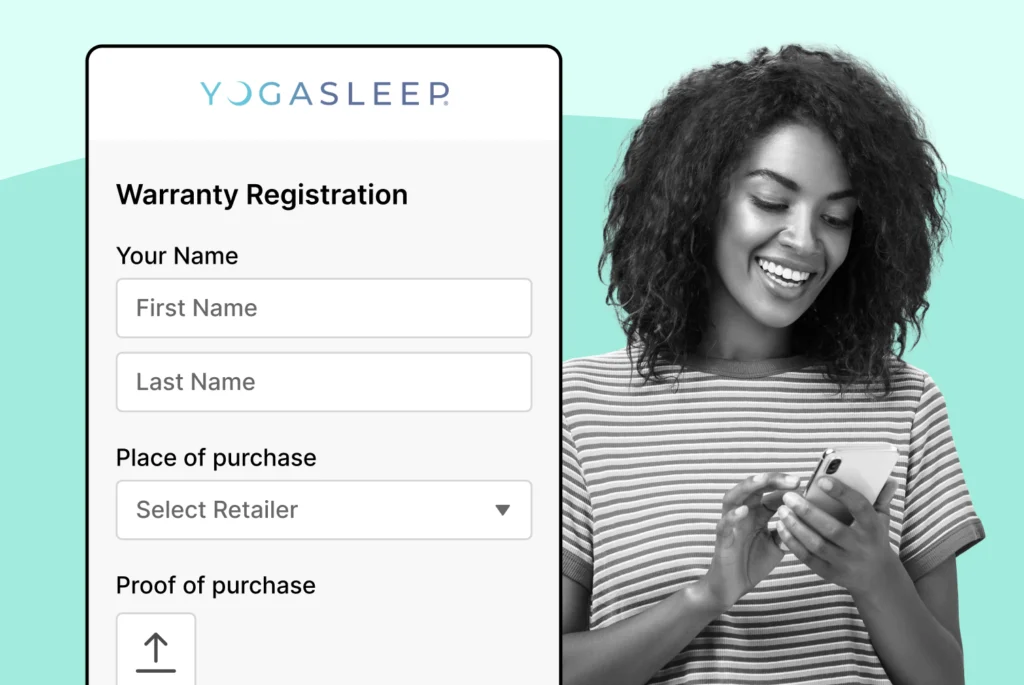
Discover effective strategies to combat warranty fraud and protect your business. Learn best practices for prevention and safeguard your assets. Read more!
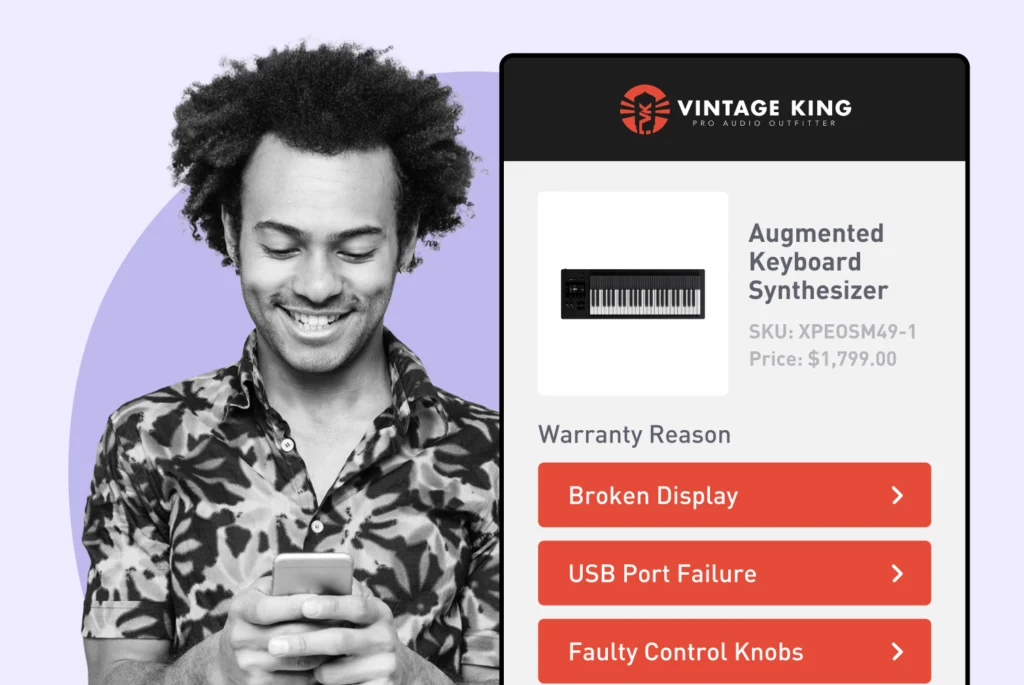
Master the essentials of electronics warranty return management with our comprehensive guide. Streamline your process and reduce hassle. Read more now!